‘A Transforming Collaboration’ | Chico State University, California
Experiments in sculpture, from wood to metal casting: a student/mentor collaboration in foundry and wood at the Art and Art History Department, Chico State University.
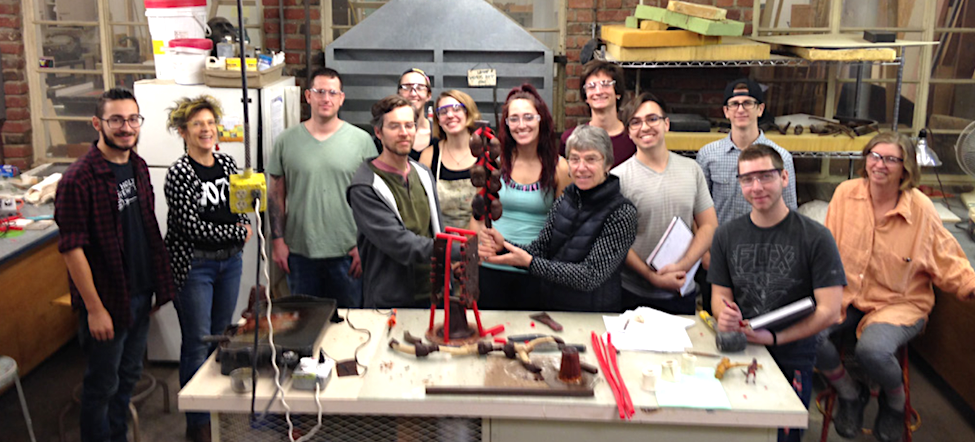
Students from the Fire Arts (metal casting) class at Chico State University got the chance recently to meet with San Francisco based artist Gyöngy Laky, a meeting which was initiated by our teacher, Sheri Simons.
For 50+years, Gyöngy Laky, artist and professor, has inspired generations of students in Textiles who seek to push the limits of convention in order to explore personal and structural interpretations of a textile. She has widened the definition of weaving as a ‘soft’ art to encompass materials such as nails, trees and plastics, as they grow in scale, complexity and concept. Laky mostly works in wood and had no experience in metal casting. Everyone participating in the workshop was interested in the form and meaning that Laky‘s work might take if it were to be cast in bronze. The collaboration meant diving in to unknown waters, both for the students and for Gyöngy.
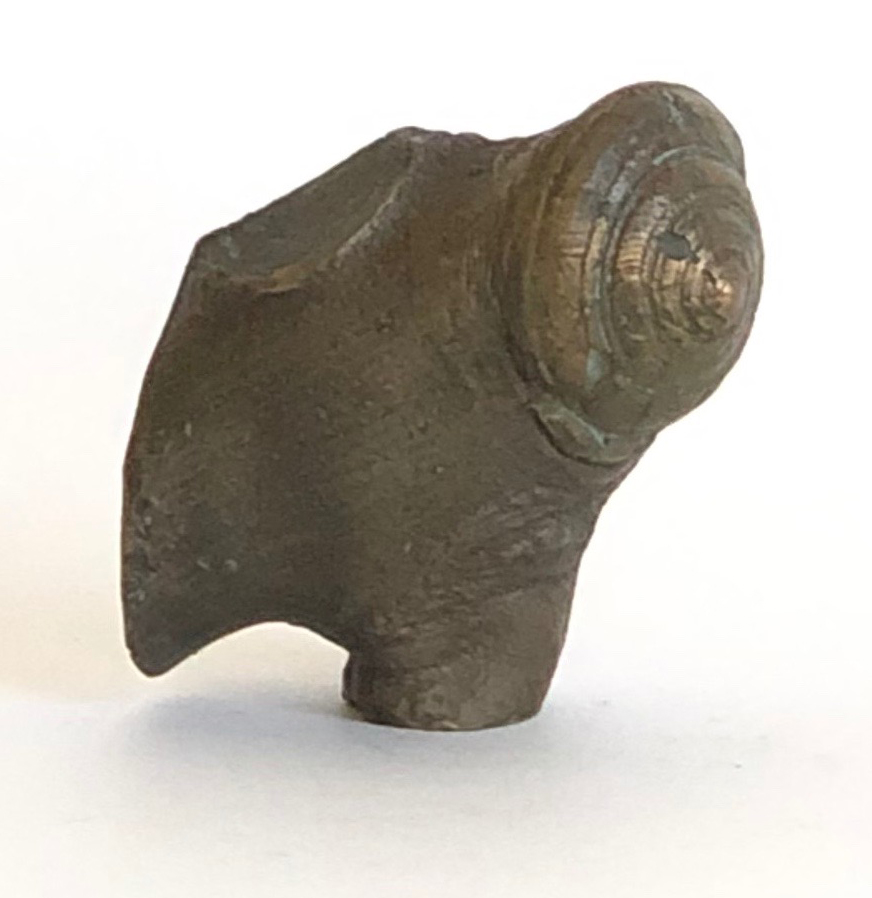
Five students from the class self-selected to collaborate with Gyöngy: Cathie Cousineau, Brie Evans, Kris Johnson, Franziska Kolling, and Shai Porath. They were relatively new to foundry work. They began by studying the carefully truncated twigs and branches that Gyöngy uses in her work. Students spent part of the semester experimenting with formal inventions that led into conceptual shifts as the material and techniques moved from wood to bronze.
Molds of the branches were made and cast in wax. Students reworked the forms in order to find connectivity between the parts: theirs and Gyöngy’s. Their contributions to the collaboration included editing, augmenting, and re-purposing Gyöngy’s forms through similar yet independent lens. In some cases, they spliced in their own imagery in concert or opposition to Gyöngy’s.
Cathie Cousineau spoke of a pairing that never would have taken place without the introduction of Gyöngy’s branches. Her approach introduced Gyöngy’s land-based material to her sea-based object.The result: a branch knuckle mated with an 'Architectonica perspectiva' shell. Their meeting, cast in bronze, made a believable object. Gyöngy described it this way: “It was like a small hand-held poem.”
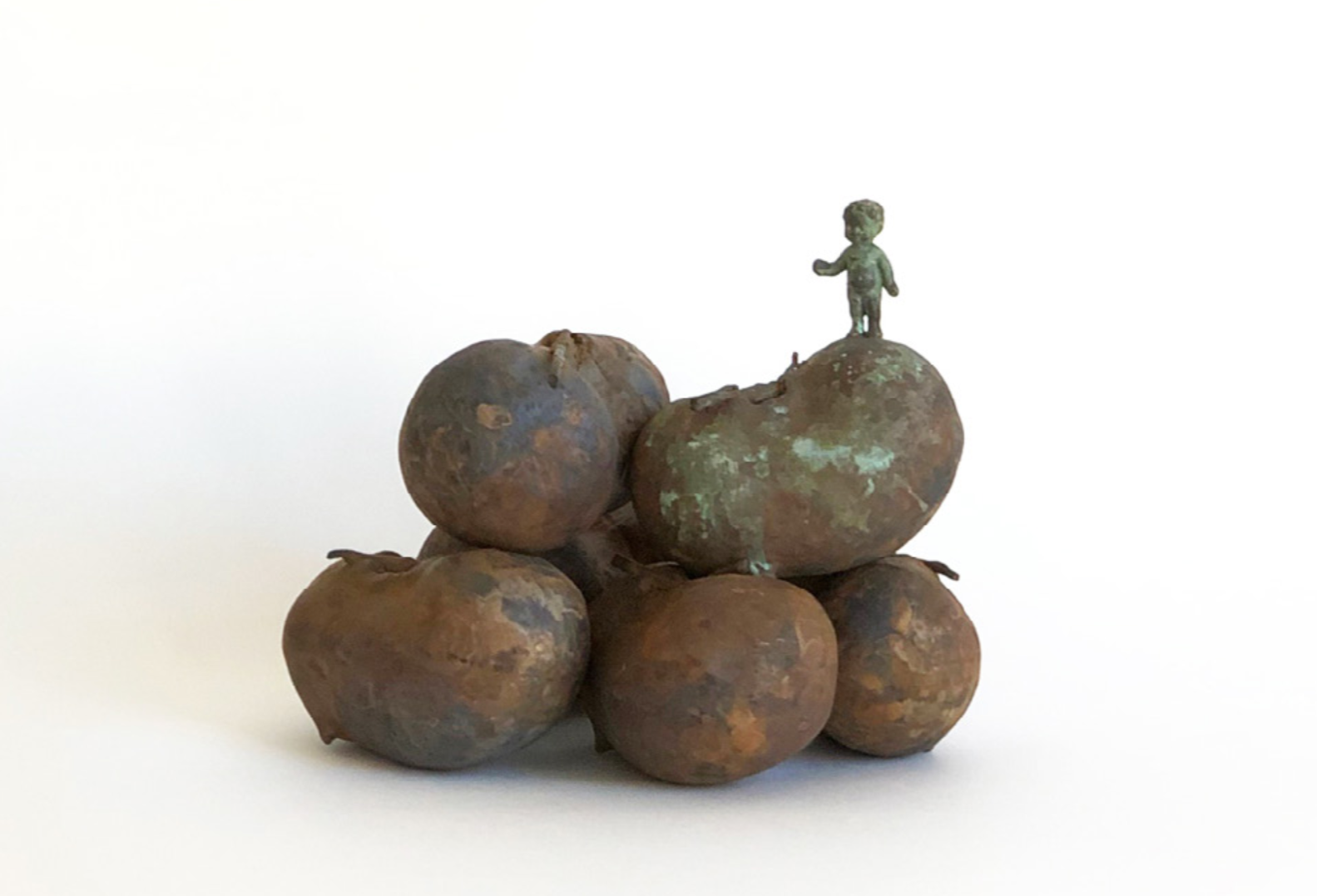
For Brie Evans, “...this project was a rollercoaster of emotions. I had a lot of fears regarding the final outcome: if it would be something that Gyöngy actually liked or not, if I was truly getting anything out of the project by handing over a collection of pieces I had spent weeks in the shop working on, and if they would ever be shown in an actual gallery. I realized that the point of this project was not to try and please her. The point of this collaboration was to learn. Meeting Gyöngy alone was truly a life changing experience, but getting to work with her on a collaborative project taught me more about the professional world of art than any class could have taught me. I appreciated Gyöngy’s fledgling perspective on the casting process because when you don’t know the process or something well you are not held back by fear of aiming too high or tackling a project too big—the sky is the limit when you are introduced to a new medium.”

Franziska Kolling writes, “... I have never participated in a collaborative project before, although while being a student, you kind of collaborate with your peers all the time (thinking: group projects and so on). Gyöngy was very open to our contribution during the collaborative period, since she has not worked with bronze as a material before. I thought this was the most interesting part, since none of us could predict how the outcome would be. I especially liked the fact that I could talk to someone about my ideas that concerned their work too, since I haven’t worked in bronze or even sculpture before I took this class. I also found that I cared a lot about the pieces we made together, since I was not responsible for them just by myself. Caring for them and the project was a big part of it... so every detail had to be perfect.
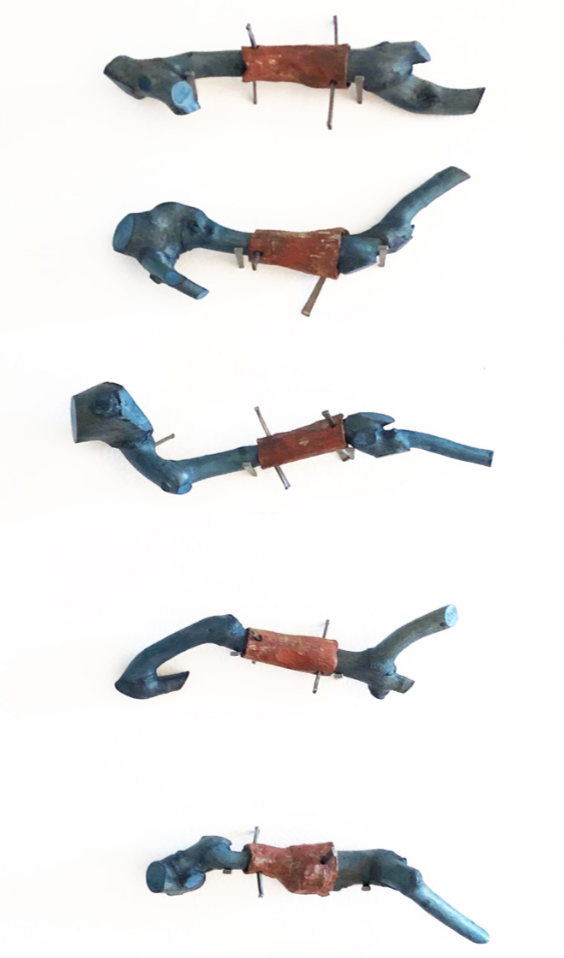
I have the feeling that everyone who participated in the collaboration is very proud of the outcome of it. When I think about this particular collaboration, I not only think about the finished bronze pieces and how proud I am of those, but also about the gained friendship with Gyöngy. I learned a lesson about how valuable it is to not only constantly talk to your peers, but also try to gain as much knowledge from someone who already is where you eventually want to be - in life, in their career. I feel overall inspired from this experience.”
Shai Porath came to the Fire Arts class with a background in ceramics. Here he discusses thoughts about collaboration between artists: “I was unsure what the level of collaboration was, and how it was going to work. Gyöngy ... was open to hearing our ideas and thoughts [on] how to integrate bronze with her work. We went through several stages in which we brainstormed, made wax models, discussed which ideas felt more successful, and actualized these ideas together. I was inspired to see an experienced artist work with us, emerging artists, supporting us along the process of creation, listening and inviting a constructive dialog. It ... bonded us together as group of artists, empowered us, and motivated us to continue to discover our passions and voices as artists.
I wish to encourage young emerging artists to look for ... collaborative opportunities that drive you out of your comfort zone to be around experienced artists, get inspired, and do what you love to do – art.”
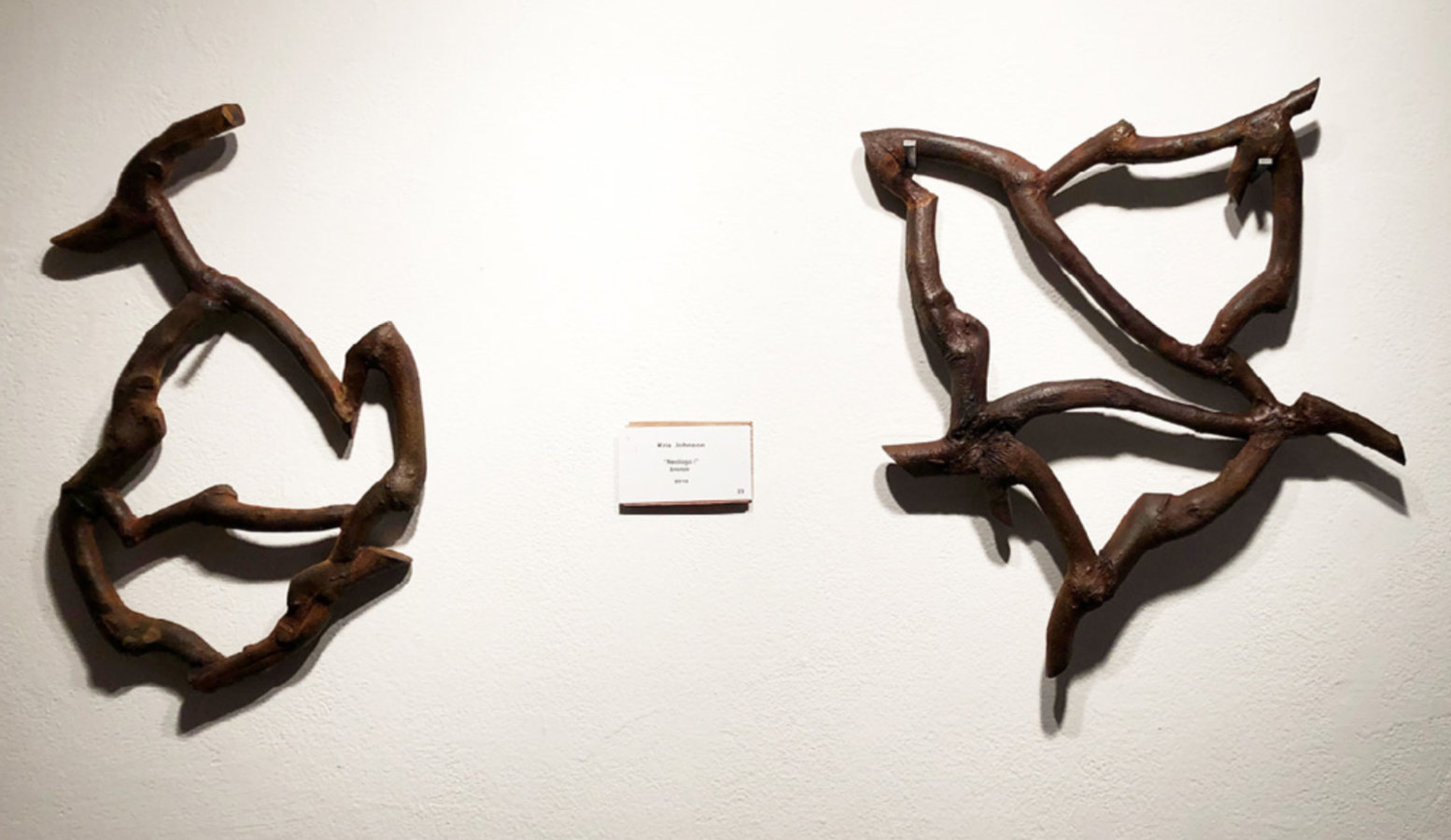
Kris Johnson’s reflections: “My experience during the collaboration project was very new for me. I have only done collaboration work with other students so working with a professional artist definitely came with some new challenges that made me need to change how I was used to working. I definitely learned a lot from this experience and can‘t wait to apply what I‘ve learned to my own work in the future.”

Gyöngy’s response to the project: “...They have all had a great influence on my thinking and how I respond to my own ideas and thoughts about future work. All the pieces, as well as the interactions with the students, have had and continue to have a profound impact on me. I have always wanted to include in my work a nature/human aspect - for example, branches studded with nails - tension sometimes that I like... a bit of constructive but, also, questionable disquiet/discomfort and also conveying human interaction with nature...also troubling as well as comforting.
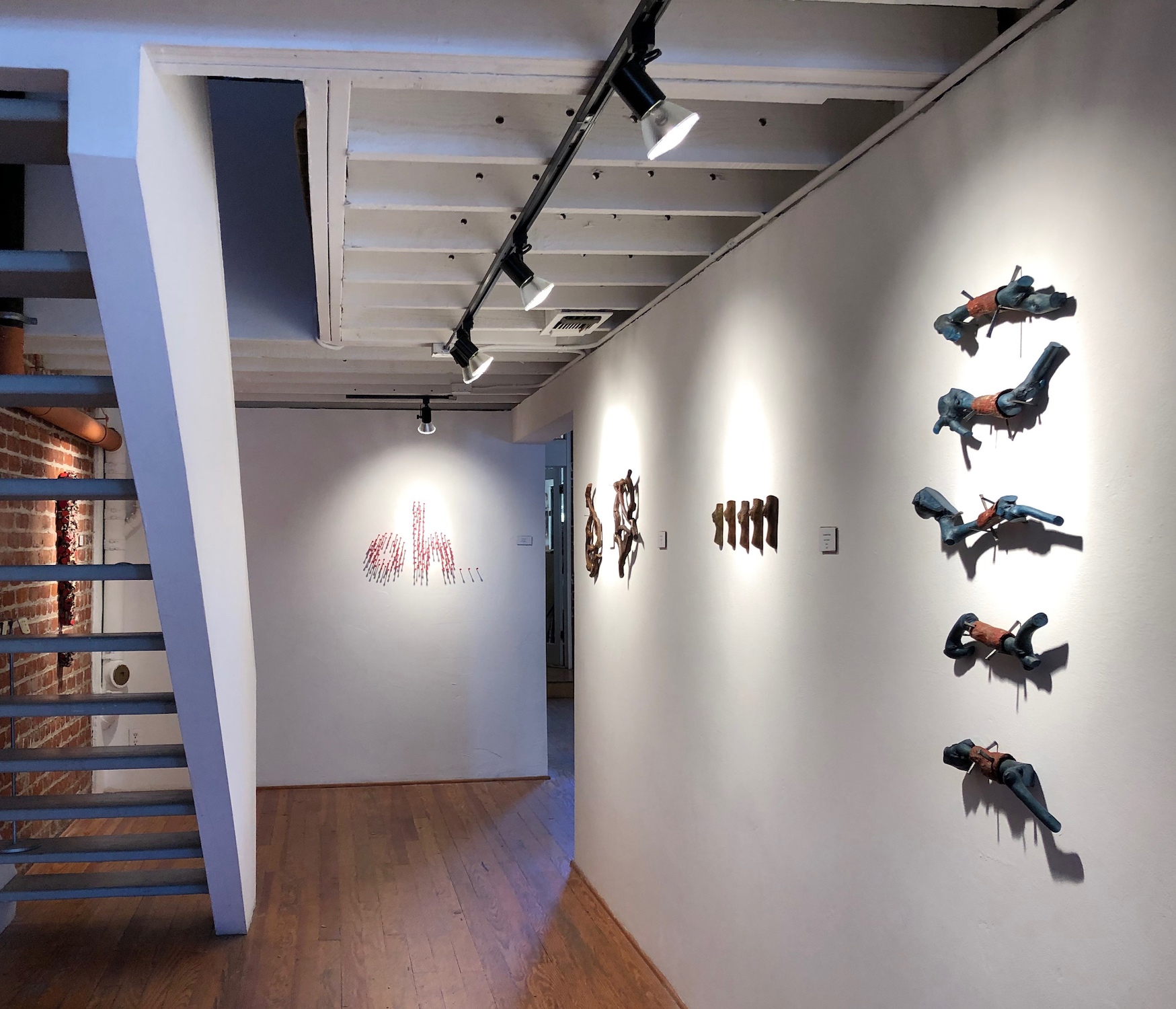
The bronze heavy metal mimicking natural items seems to pose so many questions. Bronzing baby shoes... to preserve something precious that is now gone (Cathie's piece). To immortalize something transitory and temporal (Franziska's pieces). To put to use - make a tool - see potential to connect (Shai's pieces) to make sculpture that could not happen otherwise (Kris's pieces). And I still wonder if I can love bronze as much as wood?! Of course, the question of permanence, of freezing time.”
--------------------------------------------------
Much of the bronze work produced by this collaboration was shown, along with Gyöngy’s works in wood, in February 2019 at 'b.sakata garo' gallery, Sacramento, California.